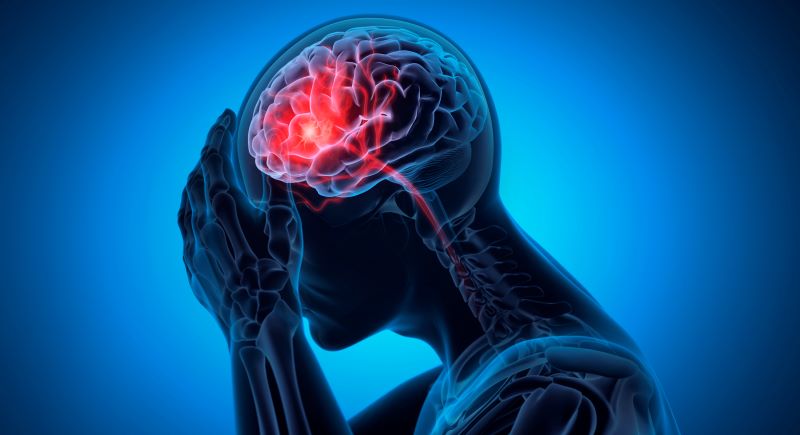Save Your Brain: Know the Signs of TIA
April 16, 2025
By: Julie Hordyk
Categories: Neurosciences (Brain Spine, Nerves), Stroke
Tags: mini stroke, TIA vs Stroke, Stroke
A stroke occurs when a blood clot blocks an artery, cutting off blood flow to the brain. Strokes create permanent brain damage.
A transient ischemic attack, or TIA, is the warning sign for a stroke. A TIA, just like a stroke, occurs when a blood clot blocks an artery. The difference is that this blockage is temporary. It usually dissipates on its own without causing permanent damage.
The symptoms of a TIA look exactly like what you would experience if you were having a stroke:
• sudden weakness, numbness, or paralysis on one side of the body
• slurred speech
• blindness or significantly decreased vision
• dizziness
• severe headache with no apparent cause
Why is a TIA a serious condition?
A TIA may be temporary, but it is a red-light warning that a stroke could be on the way.
Up to 20% of people who experience a TIA go on to have a stroke within 90 days. Half of those strokes occur within two days.
So, this is not something that should be ignored. Patrick Pavwoski, DO, with Trinity Health Medical Group Neurology - Medical Pavilion, Muskegon, explains exactly why a TIA is serious business.
“Healthy people do not wake up one morning with paralysis,” he said. “It’s not normal to suddenly lose your ability to speak or see. These are all warning signs that something serious is going on in your body. If you had crushing heart pain, you would go to the hospital immediately. The same is true here. If you experience TIA symptoms, you need emergency medical treatment right now.”
What should you do if you experience TIA symptoms?
It might be tempting to wait and see if the symptoms dissipate on their own. According to Dr. Pavwoski, that’s the worst thing you could do.
“The symptoms of a TIA and a stroke are exactly the same,” he points out. “We don’t know which one is occurring until you get into the Emergency Room and we run diagnostic tests. But we do know this: time equals brain cells. For every minute that a stroke goes untreated, you lose 1.9 million neurons. In one minute, you’re losing 3.6 years’ worth of brain. And when the brain is gone, it’s gone. Those neurons don’t regenerate. For that reason, there is no ‘reasonable time’ to wait. The sooner you get help, the sooner medical staff can evaluate and treat you to save those brain cells.”
Can a TIA be prevented?
As with many other diseases, your risk of TIA and stroke increases with certain other health conditions.
“People who smoke, have diabetes or Afib are at high risk for TIA as well as stroke,” Dr. Pavwoski says. “But there’s one risk factor that’s even more significant. Back in the 1800s, syphilis was the biggest cause of stroke. Today, hypertension has taken over that spot. If you have high blood pressure, you are at very high risk for TIA and stroke.”
The most important things you can do to prevent a TIA are avoid smoking, manage chronic diseases like high blood pressure and diabetes, and take your medicines as directed. And see your doctor regularly.
“The number one reason people end up in my office after a TIA is that they have not had regular checkups,” Dr. Pavwoski said. “I see people who have not been to a primary care provider in 20 years, and their blood pressure is sky high. That’s a TIA or stroke waiting to happen.”
Take two important steps to help prevent a TIA or stroke
First, visit your primary care provider regularly and understand your risk factors. Make sure you are managing the things you can manage.
Learn if you’re at a higher risk for a stoke with our quick Health Risk Assessment.
Second, memorize the simple acronym BE FAST to remember the symptoms and recommended action for a TIA or stroke. Post it on your refrigerator, by your back door, or anywhere that you and others will see it frequently.
B = Balance – Sudden loss of balance or coordination.
E = Eyes – Blurred vision, double vision, or loss of vision in one eye.
F = Face – Drooping on one side of the face, difficulty smiling, or trouble speaking. Ask the person to smile. Is the person’s smile uneven?
A = Arm – Weakness or numbness in one arm. Ask the person to raise both arms. Does one arm drift downward?
S = Speech – Difficulty understanding words, or inability to speak. Is speech slurred?
T = Time to call 911 – Stroke is an emergency. Every minute counts. Call 9-1-1 immediately. Note the time when any of the symptoms first appear.




